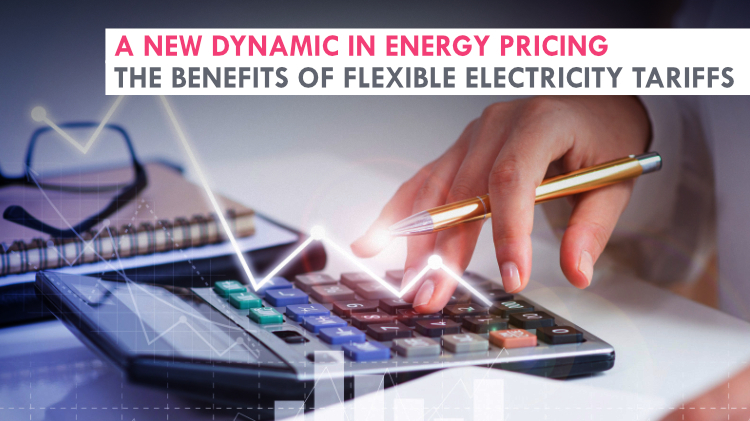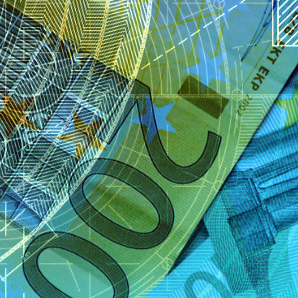
Fixed or flexible? That is the question when you’re trying to find the best energy tariff for you. Or is it?
Wholesale electricity prices keep changing, and yet many consumers pay a fixed rate. It’s easier and more straightforward, but gives them no reason to shift their usage away from times of peak demand when resources are at their limit. There are many assets that can consume electricity in a flexible way, for example heat pumps and electric vehicles, not only using electricity when it’s cheaper, but also helping to better balance the power system. So, dynamic electricity pricing, which is based on the supply and demand of energy, does deserve the attention it’s been getting recently.
Is the price right?
If you’re a residential customer, the price you pay for electricity is determined by three main factors: the price of buying and selling electricity, grid fees, and what is imposed by the state (e.g. taxes). It is the first component that varies according to the provider, so, as a consumer, you can change suppliers if your current one does not offer flexible electricity tariffs. A provider that does can help you save money by adjusting your consumption to the price of electricity. It supports a variable rate for electricity that changes throughout the day or year, which allows you to take advantage of lower energy costs.
Flexible tariffs are not a recent innovation. Night-time and day-time tariffs have existed in Germany since as early as the 1960s; electricity is sold at a discount at night. So why are more advanced forms of flexible tariffs now so important?
In the past, supply and demand patterns were very predictable, so simple tariffs sufficed. Now both supply (variable renewables) and demand (EV charging, heat pumps) are hard to predict, leading to unexpected imbalances. Wholesale prices are formed based on supply and demand, thus providing a reliable signal to ensure a balance. Today, technological advances make a more sophisticated differentiation than that between night-time and day-time tariffs possible since there are several types of flexible pricing. Some examples are:
Static Time-of-Use (TOU) tariffs: a more advanced version of the old German model that can have weekly and seasonal components. Such time-variable tariffs make it easy for consumers to plan their electricity use, but do not account for unexpected variation in supply or demand.
Critical peak tariffs: prices tend to be static but can increase at times of extreme peak load (variable peak tariffs are similar, but the surcharge is tied to wholesale prices.) Their main advantage is that they reduce peak demands, with customers notified in advance of critical peaks so they can reduce consumption accordingly. At the same time, while these tariffs encourage shifting loads away from the peaks, they don’t incentivize moving it to the times when an excess supply of cheap renewable energy is available.
Real-time tariffs: also known as dynamic tariffs, they use the day ahead market for price information to reflect current wholesale prices. Since prices can vary greatly throughout the day, it’s hard for consumers to plan, but this model provides the most accurate signals for balancing the grid, motivating consumers to not only reduce consumption during peak times, but also to shift it into the times when supply most greatly exceeds demand.
What is key, irrespective of the type of the tariff, is the predictability of the variations: how often prices can vary, and how well consumers can plan. The more sophisticated and complex pricing models get, the less easy they become for customers to predict and plan for. That’s why automation plays an increasingly important role in order for these tariffs to work.
Offering dynamic electricity prices is only possible when the provider has the necessary information, i.e. real-time data, on customers’ consumption. Smart meters can record and pass this data to your supplier, enabling it to improve billing, detect surges or drops in voltage, and respond fast if there is a service disruption or any other service-related problem. In short, these digital devices are advantageous to consumers and utilities alike because they make both energy consumption and grid operations more efficient and cost-effective. But these innovative meters aren’t as common as they should be: depending on the country or the region, their popularity varies greatly.
Getting smart
In Germany, for example, only around 500,000 smart meters were installed by the end of 2022, which is 1.2% of the country’s 41 million households. But Germany is one of the laggards; other EU states are doing much better. Following a government mandate, Spain became the first country in the bloc to achieve 100% installation in 2018. Sweden has also reached full coverage, and is already replacing old smart meters with more modern ones: in line with government legislation, 275,000 smart meters will be replaced by the end of 2024. Finland is also preparing for a rollout of more advanced devices. Globally, according to the International Energy Agency (IEA), the number of smart meters exceeded 1 billion in 2022 - a massive increase if you consider that in 2010 “only” around 100 million of them were in use.
The more widespread smart meters get, the more feasible dynamic pricing is likely to become. In fact, the EU directive "Dynamic electricity price contracts" requires member states to implement dynamic pricing into national law by 2025. Currently, in Spain and Italy, TOU tariffs are the default option, used by nearly 40% of household consumers in Spain. In Scandinavia, despite the widespread smart meter rollout, seasonal fluctuations dominate the power market, and so the most common price structure involves variable tariffs that change monthly. In Germany, few options exist but all electricity suppliers will be required to offer variable and dynamic models by 2025. Variable grid fees based on a simple TOU model are also coming to Germany as well as other countries.
While smart meters are essential to collecting data, we must make sure that the data at our disposal is “good” data, i.e. granular and easy to access. However, as IEA points out, only 2-4% of data available worldwide is being used to improve the efficiency of grid operations. Even most transmission system operators admit they don’t make the most of the applications that could analyze data, and so a lot of valuable data remains idle. Distribution system operators have it even tougher: they have to deal with the brunt of behind-the-meter PV, heat pumps and EV charging and are doing it pretty much in the dark, with little or no data at all.
As is often the case, it’s up to policymakers to improve the situation. Meeting technological requirements on a large scale will be a challenge, but it’s the regulatory environment that stands in the way of maximizing the use of both smart meters and flexible pricing. Despite the EU mandating dynamic tariffs, there are still some hurdles that need to be overcome, especially as far as national legislation is concerned. Domestic regulations are either too complicated or not strong enough in many member states, and the adoption process of EU law can be slow and complex. But once the required regulations are fully implemented, all suppliers across the bloc will be able to offer dynamic electricity prices. Both consumers and grid operators could enjoy the benefit: a smarter energy system with lower costs and increased efficiency.




